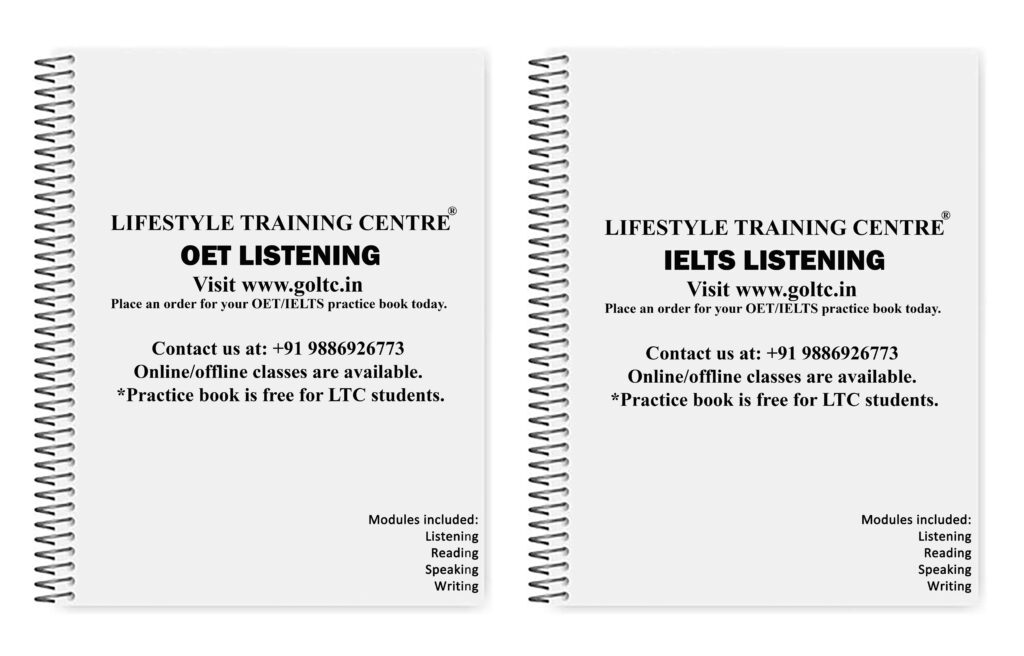Reading passage 1
You should spend about 20 minutes on Questions 1-13, which are based on Reading Passage I below.
A. The way in which information is taught can vary greatly across cultures and time periods. Entering a British primary school classroom from the early 1900s, for example, one gains a sense of austerity, discipline, and a rigid way of teaching. Desks are typically seated apart from one another, with straight- backed wooden chairs that face directly to the teacher and the chalkboard. In the present day, British classrooms look very different. Desks are often grouped so that students face each other rather than the teacher, and a large floor area is typically set aside for the class to come together for group discussion and learning.
B. Traditionally, it was felt that teachers should be in firm control of the learning process and that the teacher’s task was to prepare and present material for students to understand. Within this approach, the relationship students have with their teachers is not considered important, nor is the relationship students have with each other in the classroom. A student’s participation in class is likely to be minimal, aside from asking questions directed at the teacher, or responding to questions that the teacher has directed at the student. This style encourages students to develop respect for positions of power as a source of control and discipline. It is frequently described as the “formal authority” model of teaching.
C. A less rigid form of teacher-centred education is the “demonstrator” model. This maintains the formal authority model’s notion of the teacher as a “flashlight” who illuminates the material for his or her class to learn, but emphasis a more individualized approach to form. The demonstrator acts as both a role model and a guide, demonstrating skills and processes and then helping students develop and apply these independently. Instructors who are drawn to the demonstrator style are generally confident that their own way of performing a task represents a good base model, but they are sensitive to different learning styles and expect to provide students with help on an individual basis.
D. Many education researchers argue for student-centred learning instead and suggest that the learning process is more successful when students are in control. Within the student-centred paradigm, the “delegator” style is popular. The delegator teacher maintains general authority, but they delegate much of the responsibility for learning to the class as a way for students to become independent thinkers who take pride in their own work. Students are often encouraged to work on their own or in groups, and if the delegator style is implemented successfully, they will build not only a working knowledge of course- specific topics but also self-discipline and the ability to coordinate group work and interpersonal roles.
E. Another style that emphasises student-centred education is the “facilitator” mode of learning. Here, while a set of specific curriculum demands is already in place, students are encouraged to take the initiative for creating ways to meet these learning requirements together. The teacher typically designs activities that encourage active learning, group collaboration, and problem-solving, and students are encouraged to process and apply the course content in creative and original ways. Whereas the delegator style emphasises content and the responsibility students can have for generating and directing their own knowledge base, the facilitator style emphasises form and the fluid and diverse possibilities that are available in the process of learning.
F. Until the 1960s, formal authority was common in almost all Western schools and universities. As a professor would enter a university lecture theatre, a student would be expected to rush up, take his bag to the desk, and pull out the chair for the professor to sit down on. This style has become outmoded over time. Now at university, students and professors typically have more relaxed, collegiate relationships, address each other on a first-name basis and acknowledge that students have much to contribute in class. Teacher-centred education has a lingering appeal in the form of the demonstrator style, however, which remains useful in subjects where skills must be demonstrated to an external standard and the learning process remains fixed in the earlier years of education. A student of mathematics, sewing or metalwork will likely be familiar with the demonstrator style. At the highest levels of education, however, the demonstrator approach must be abandoned in all fields as students are required to produce innovative work that makes unique contributions to knowledge. Thesis and doctoral students lead their own research in facilitation with supervisors.
G. The delegator style is valuable when the course is likely to lead students to careers that require group projects. Often, someone who has a high level of expertise in a particular field does not make for the best employee because they have not learnt to apply their abilities in a coordinated manner. The delegator style confronts this problem by recognizing that interpersonal communication is not just a means of learning but an important skillset in itself. The facilitator model is probably the most creative and is therefore, not suited to subjects where the practical component necessitates a careful and highly disciplined manner, such as training to be a medical practitioner. It may, however, suit more experimental and theoretical fields ranging from English, music, and the social sciences to science and medical research that takes place in research labs. In these areas, “mistakes” in the form are important and valuable aspects of the learning and development process.
H. Overall, a clear evolution has taken place in the West from a rigid, dogmatic, and teacher- dominated way of learning to a flexible, creative, and student-centred approach. Nevertheless, different subjects, ages, and skill levels suit different styles of teaching, and it is unlikely that there will ever be one recommended approach for everyone.
Questions 1-8
Look at the following statements (Questions 1-8) and the styles of teaching below.
Match each statement with the correct teaching style, A-D.
Write the correct letter, A-D, in boxes 1-8 on your answer sheet.
NB You may use any letter more than once.
1. The emphasis is on students directing the learning process.
2. The teacher shows the class how to do something, then students try it on their own.
3. Student-teacher interaction and student-student interaction is limited.
4. The emphasis is on the process of solving problems together.
5. Students are expected to adjust to the teacher’s way of presenting the information.
6. The teacher designs group activities that encourage constructive interaction.
7. Time is set aside for one-on-one instruction between teacher and student
8. Group and individual work are encouraged independently of the teacher.
List of Teaching Styles
A. Formal authority
B. Demonstrator
C. Delegator
D. Facilitator
Questions 9-12
Do the following statements agree with the information given in Reading Passage 1?
In boxes 9-12 on your answer sheet, write
TRUE, if the statement agrees with the information FALSE, if the statement contradicts with the information NOT GIVEN, if there is no information on this
9. The formal authority model remains popular in educational institutions of the West
10. The demonstrator model is never used at the tertiary level.
11. Graduates of delegator style teaching are good communicators.
12. The facilitator style is not appropriate in the field of medicine.
Question 13 Choose the correct letter. A, B, C or D. Write the correct letter in box 13 on your answer sheet.
13. What is the best title for Reading Passage 1?
A. Teaching styles and their application
B. Teaching: then and now
C. When students become teachers
D. Why student-centred learning is best
Reading Passage 2
You should spend about 20 minutes on Questions 14-26, which are based on Reading Passage 2 below.
The Flavour Industry
A. Read through the nutritional information on the food in your freezer, refrigerator or kitchen pantry, and you are likely to find a simple, innocuous-looking ingredient recurring on a number of products: “natural flavour”. The story of what natural flavour is, how it got into your food, and where it came from is the result of more complex processes than you might imagine.
B. During the 1980s, health watchdogs and nutritionists began turning their attention to cholesterol, a waxy steroid metabolite that we mainly consume from animal-sourced products such as cheese, egg yolks, beef, poultry, shrimp, and pork. Nutritionists blamed cholesterol for contributing to the growing rates of obesity, heart disease, diabetes, and several cancers in Western societies. As extensive recognition of the matter grew amongst the common people, McDonald’s stopped cooking their French fries in a mixture of cottonseed oil and beef tallow, and in 1990, the restaurant chain began using 100% vegetable oil instead.
C. This substantially lowered the amount of cholesterol in McDonald’s fries, but it created a new dilemma The beef tallow and cottonseed oil mixture gave the French fries high cholesterol content, but it also gifted them with a rich aroma and “mouth-feel” that even James Beard, an American food critic, admitted he enjoyed. Pure vegetable oil is bland in comparison. Looking at the current ingredients list of McDonald’s French fries, however, it is easy to see how they overcame this predicament. Aside from a few preservatives, there are essentially three main ingredients: potato, soybean oil, and the mysterious component of “natural flavour”.
D. Natural flavour also entered our diet through the rise in processed foods, which now make up over 90% (and growing) of the American diet, as well as representing a burgeoning industry in developing countries such as China and India Processed foods are essentially any foods that have been boxed, bagged, canned or packaged, and have a list of ingredients on the label. Sometimes, the processing involves adding a little sodium or sugar, and a few preservatives. Often, however, it is coloured, bleached, stabilized, emulsified, dehydrated, odour-concealed, and sweetened. This process typically saps any original flavour out of the product, and so, of course, flavour must be added back in as well.
E. Often this is “natural flavour”, but while the term may bring to mind images of fresh barley, hand- ground spices, and dried herbs being traded in a bustling street market, most of these natural sources are, in fact, engineered to culinary perfection in a set of factories and plants of the New Jersey Turnpike outside of New York. Here, firms such as International Flavors & Fragrances, Harmen & Keimer, Flavor Dynamics, Frutarom and Elan Chemical isolate and manufacture the tastes that are incorporated in much of what we eat and drink. The sweet, summery burst of naturally squeezed orange juice, the wood-smoked aroma in barbeque sauces, and the creamy, buttery, fresh taste in many dairy products do not come from sun-drenched meadows or backyard grills but are formed in the labs and test tubes of these flavour industry giants.
F. The scientists – dubbed “flavourists” who create the potent chemicals that set our olfactory senses to overdrive use a mix of techniques that have been refined over many years. Part of it is dense, intricate chemistry: spectrometers, gas chromatographs, and headspace-vapour analysers can break down components of a flavour in amounts as minute as one part per billion. Not to be outdone, however, the human nose can isolate aromas down to three parts per trillion. Flavourists, therefore, consider their work as much an art as a science, and flavourism requires a nose “trained” with a delicate and poetic sense of balance.
G. Should we be wary of the industrialisation of natural flavour? On its own, the trend may not present any clear reason for alarm. Nutritionists widely agree that the real assault on health in the last few decades stems from an “unholy trinity” of sugar, fat, and sodium in processed foods. The natural flavour on its own is not a health risk. It does play a role, however, in helping these processed foods to taste fresh and nutritious, even when they are not. So, while the natural flavour industry should not be considered the culprit, we might think of it as a willing accomplice.
Questions 14-21
Reading Passage 2 has seven paragraphs, A-G.
Which paragraph contains the following information?
Write the correct letter. A-G, in boxes 14-21 on your answer sheet.
NB You may use any letter more than once.
14. examples of companies that create natural flavours
15. an instance of a multinational franchise responding to public pressure
16. a statement on the health effects of natural flavours
17. an instance where a solution turns into a problem
18. a place in the home where one may encounter the term “natural flavour”
19. details about the transformation that takes place in processed grocery items
20. a comparison of personal and technological abilities in flavour detection
21. examples of diet-related health conditions
Questions 22-25
Do the following statements agree with the information given in Reading Passage 2?
TRUE, if the statement agrees with the information
FALSE, if the statement contradicts with the information
NOT GIVEN, if there is no information on this
22. On their own, vegetable oils do not have a strong flavour.
23. Soybean oil is lower in cholesterol than cottonseed oil.
24. Processed foods are becoming more popular in some Asian countries.
25. All food processing involves the use of natural flavours.
Question 26 Choose the correct letter. A B, C, or D.
26. The writer of Reading Passage 2 concludes that natural flavours …………………..
A. are the major cause of dietary health problems.
B. are unhealthy, but not as had as sugar, fat, and sodium.
C. have health benefits that other ingredients tend to cancel out.
D help make unhealthy foods taste better.
Reading Passage 3
You should spend about 20 minutes on Questions 27-40, which are based on Reading Passage 3 below.
Austerity Measures
A. Austerity measures are actions that a state undertakes in order to pay back its creditors. Those measures typically involve slashing government expenditure and hiking taxes, and most of the time, these are imposed on a country when its national deficit is believed to have become unsustainable. In this situation, banks may lose trust in the government’s ability or willingness to repay existing debts, and in return can refuse to roll over current loans and demand cripplingly excessive interest rates on new lending. Governments frequently then turn to the International Monetary Fund (IMF), an intergovernmental organization that functions as a lender of last resort. In return, the IMF typically demands austerity measures so that the indebted country is able to curtail its budget deficit and fulfil their loan obligations.
B. A wave of austerity measures across Europe in 2010 has seen cuts and freezes to pensions, welfare and public sector salaries as well as hikes to some taxes and excises. The Greek programme attempts to narrow its budget shortfall from 8.1 per cent of GDP in 2010 to 2.6 per cent of GDP in 2014 primarily by freezing public sector incomes during that period and reducing public sector allowances by 8 per cent. Additionally, VAT – the Greek sales tax – will be elevated to 23 per cent, and excises on fuel, tobacco, and alcohol arc also subject to an increase. The statutory retirement age for women will be raised to 65, matching it with the current retirement age for men. These reforms have been deeply unpopular in Greece, prompting a succession of general strikes that have further dented the economy.
C. IMF-imposed austerity measures have been indicted for encouraging the deep recession following the Asian financial crisis of 1997. Starting from the early 1990s, international investors from wealthier countries such as Japan and the United States began pouring money into Southeast Asia, looking to make some quick returns and the soaring economies of Thailand. Philippines, Malaysia and others earned themselves the title “the Asian tigers”. When things started to turn sour, however, the foreign investors panicked and retracted their investments in masses decimating Asian currencies and turning millions of employees out of work. The IMF’s role in the recovery was to impose austerity measures that kept interest rates high while driving down wages and the labour standards at a time when workers were already suffering. According to one former IMF economist, these interventions on a global scale have caused the deaths of 6 million children every year.
D. Many economists consequently view austerity measures as a terrible blunder. John Maynard Keynes was the first to propose an alternative method, long before the Asian financial crisis. Governments, he attempted to demonstrate, could conceivably spend their national economy out of debt. Although logically implausible at first blush, this argument is based on the notion that recessions deepen from a persistent cycle of low incomes, low consumer spending, and low business growth. A government can theoretically reverse this downward spiral by injecting the economy with much needed (albeit borrowed) capital. This is not equivalent to an indebted consumer spending further into the red, Keynes argued, because while the consumer gains no further income on that expenditure, the government’s dollar goes into the economy and then partially boomerangs later on in the form of taxation.
E. Nobel Prize-winning economist Joseph Stiglitz follows up on this approach by noting that households across the world are currently burdened with debt. For businesses to grow, he argues, government and consumer expenditure must kick in first. Austerity measures lower the spending capacity of households, and are, therefore, considered under-productive. Another recipient of the Nobel Prize, Paul Krugman points to the recent experiences of countries such as Ireland, Latvia and Estonia. Countries that implement austerity are the “good soldiers” of the crisis, he notes, implementing savage spending cuts. “But their reward has been a slump, and financial markets continue to treat them as serious default risk.”
F. In the United Kingdom, Prime Minister David Cameron defended the necessity of austerity measures for his country by denouncing the frivolity of governments that ratchet up spending at a time the economy is contracting. This is in line with the counter-Keynesian viewpoint, known broadly as the neoclassical position. Neoclassical economists argue that business is “inspired” by fiscally conservative governments, and this “confidence” helps re-ignite the economy. A British think-tank economist, Marshall Auerback, questions this line of thinking, wondering if Cameron suggests governments should only “ratchet up spending when the economy is growing”. This Auerback warns, should be avoided because it presents genuine inflationary dangers.
Questions 27-31 Complete the summary below.
Choose NO MORE THAN TWO WORDS from the passage for each answer. Write your answers in boxes 27- 31 on your answer sheet.
A government can undergo austerity measures by cutting spending and/or raising 27 ……………… If banks do not believe that a government will settle their debts, they may ask for 28……………… that are too high to pay back. In these cases, the IMF is sometimes prepared to lend money to these governments. One of the conditions of IMF loans is that recipient countries undergo austerity measures to reduce their 29……………… and repay any debts. The IMF has attracted criticism for its role in Asia after the 1997 financial crisis. The crisis was caused when international investors pulled their money out of the region at once, causing 30……………… to foil and unemployment to rise. The IMF’s austerity measures set conditions that lowered incomes and 31……………… These policies have caused great suffering
internationally.
Questions 32-35. Choose FOUR letters A—G. Write the correct letters in boxes 32-35 on your answer sheet.
Which FOUR items are identified as features of the Greek government’s austerity measure programme in 2010?
A. reducing public sector wages between 2010 and 2014
B. cutting allowances for public sector workers
C. raising the sales tax
D. making the compulsory retirement age the same for both genders
E. multiple general strikes
F. making cigarettes more expensive
G. eliminating the budget deficit
Questions 36-40. Look at the following people (Questions 36-40) and the list of statements below. Match each person with an appropriate statement, A—F. Write the correct letter A-F in boxes 36-40 on your answer sheet.
36. John Maynard Keynes
37. David Cameron
38. Marshall Auerback
39. Joseph Stiglitz
40. Paul Kingman
How did it go? Please share your feedback in the comment section below:
IELTS Speaking Task Topics
Click on any topic to explore more!
Names

Learn about the importance of names and their cultural significance.
Study / Job

Discuss various aspects of studying and working in different fields.
Hometown

Explore the charm of your hometown and its unique features.
Accomodation

Understand various types of accommodation and living situations.
Weather

Learn about how weather influences daily life and activities.
Time

Discuss the concept of time, its importance, and time management.
Television

Talk about the role of television in modern entertainment.
Museum

Discuss the cultural importance of museums and historical exhibits.
Holidays

Explore the significance of holidays and different celebrations.
Films

Learn about the impact of films on culture and society.
Leisure Time

Discuss how leisure activities impact personal well-being.
Sport

Talk about the role of sports in health, entertainment, and culture.
Vegetables and Fruits

Discuss the health benefits and importance of fresh produce.
Maths

Explore the role of mathematics in various aspects of life.
Sky

Discuss the beauty and scientific significance of the sky.
Clothes&Fashion

Explore how clothing reflects culture and personal expression.
Weekend

Discuss the importance of weekends and ways people relax.
Reading

Learn about the importance of reading and various reading habits.
Sleep

Explore how sleep impacts physical and mental well-being.
Trees&Plants

Discuss the environmental and health benefits of plants.
Newspaper

Discuss the evolving role of newspapers in the digital age.
Texting

Explore the role of text messaging in modern communication.
Memorising

Learn techniques for improving memory and memorization.
Travelling

Discuss the importance and impact of traveling in modern society.
Communication

Explore the modes and significance of communicating well
Letter&Email

Explore the differences and significance of letters vs. emails.
Swimming

Discuss the benefits of swimming for health and fitness.
Snacks

Explore the role of snacks in daily nutrition and lifestyle.
Photography

Discuss photography’s cultural and artistic significance.
Help

Talk about the importance of offering and receiving help.
History

Discuss historical events and their impact on modern society.
Handwriting

Explore the significance of handwriting in education and culture.
Music

Learn about the influence of music on emotions and society.
Colours

Discuss how colours affect perception and mood.
Teachers

Explore the role of teachers in shaping students’ futures.
Being Alone

Talk about the experience and benefits of spending time alone.
Teamwork

Learn the importance of teamwork in professional and social contexts.
Countryside & City

Explore the charm and benefits of living in the countryside.
Social Media

Discuss the impact of social media on society and relationships.
Friends

Explore the importance of friendships in life.
Artificial Intelligence (AI)

Talk about the future of AI and its role in society.
Climate Change

Discuss the causes and consequences of climate change.
Transportation

Explore different modes of transportation in your area.
Sustainable Transportation

Explore ways to make transportation more environmentally friendly.
Space Exploration

Learn about the latest advancements in space exploration.
Shopping

Explore how shopping influences culture and the economy.
Modern Technology

Discuss how modern technology is reshaping society.
Technology

Learn about the role of technology in everyday life.
Sustainable Living

Explore ways to live sustainably for the future of the planet.
Globalisation

Learn about the effects of globalisation on society and economies.
Global Warming

Discuss the causes, effects, and solutions to global warming.
Gender Equality

Explore the importance of gender equality in modern society.
Health and Fitness

Discuss the importance of maintaining a healthy lifestyle.
Renewable Energy

Learn about renewable energy sources and their impact on the environment.
Cultural Traditions in Kerala

Explore the unique cultural traditions of Kerala, your hometown.
Cultural Traditions in Your Country

Learn about the cultural traditions in your country.
Education System

Discuss the education system in your country and its effectiveness.
Traditional Cuisine

Explore the significance of traditional cuisines in your culture.
Do you need printed IELTS/ OET practice material? Place your order today. Available now for just Rs: 1,100 (including shipping all across India) Contact us at our WhatsApp number: +91 9886926773 to place your order. (Free for LTC students)

We hope this information has been valuable to you. If so, please consider a monetary donation to Lifestyle Training Centre via UPI. Your support is greatly appreciated.

Would you like to undergo training for OET, PTE, IELTS, Duolingo, Phonetics, or Spoken English with us? Kindly contact us now!
📱 Call/WhatsApp/Text: +91 9886926773
📧 Email: mail@goltc.in
Visit us in person by following the directions on Google Maps. We look forward to welcoming you to the Lifestyle Training Centre.
Follow Lifestyle Training Centre on social media:
Thank you very much!
Would you like to download a copy of the practice test? Please click on the download button below:


Pingback: THE WAY IN WHICH INFORMATION IS TAUGHT IELTS READING | Lifestyle Training Centre®